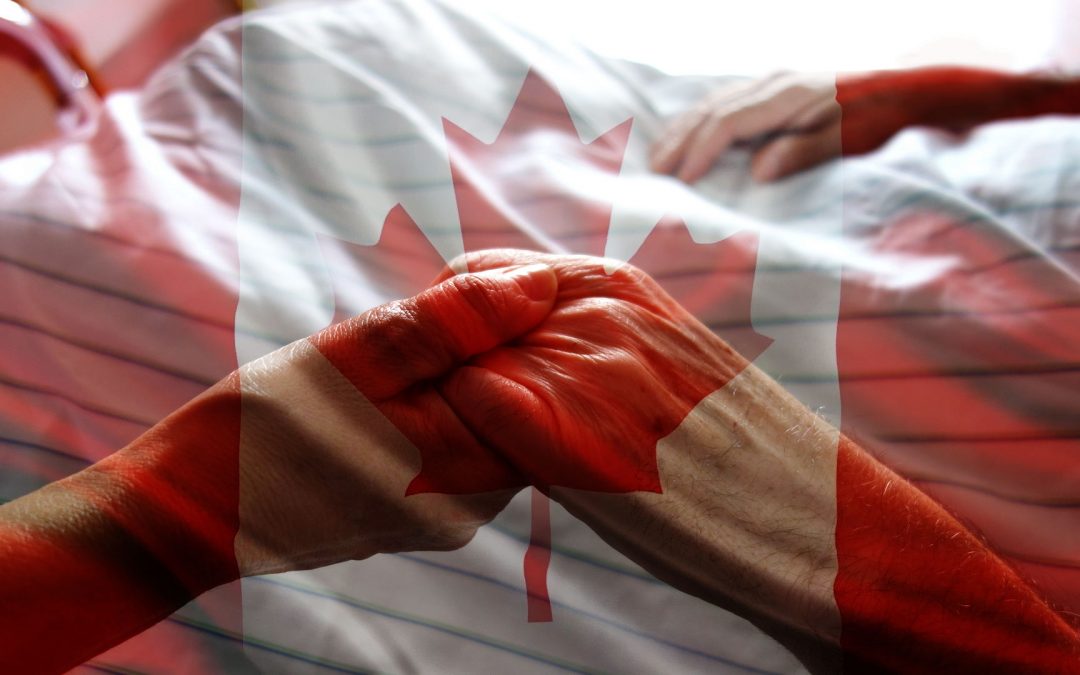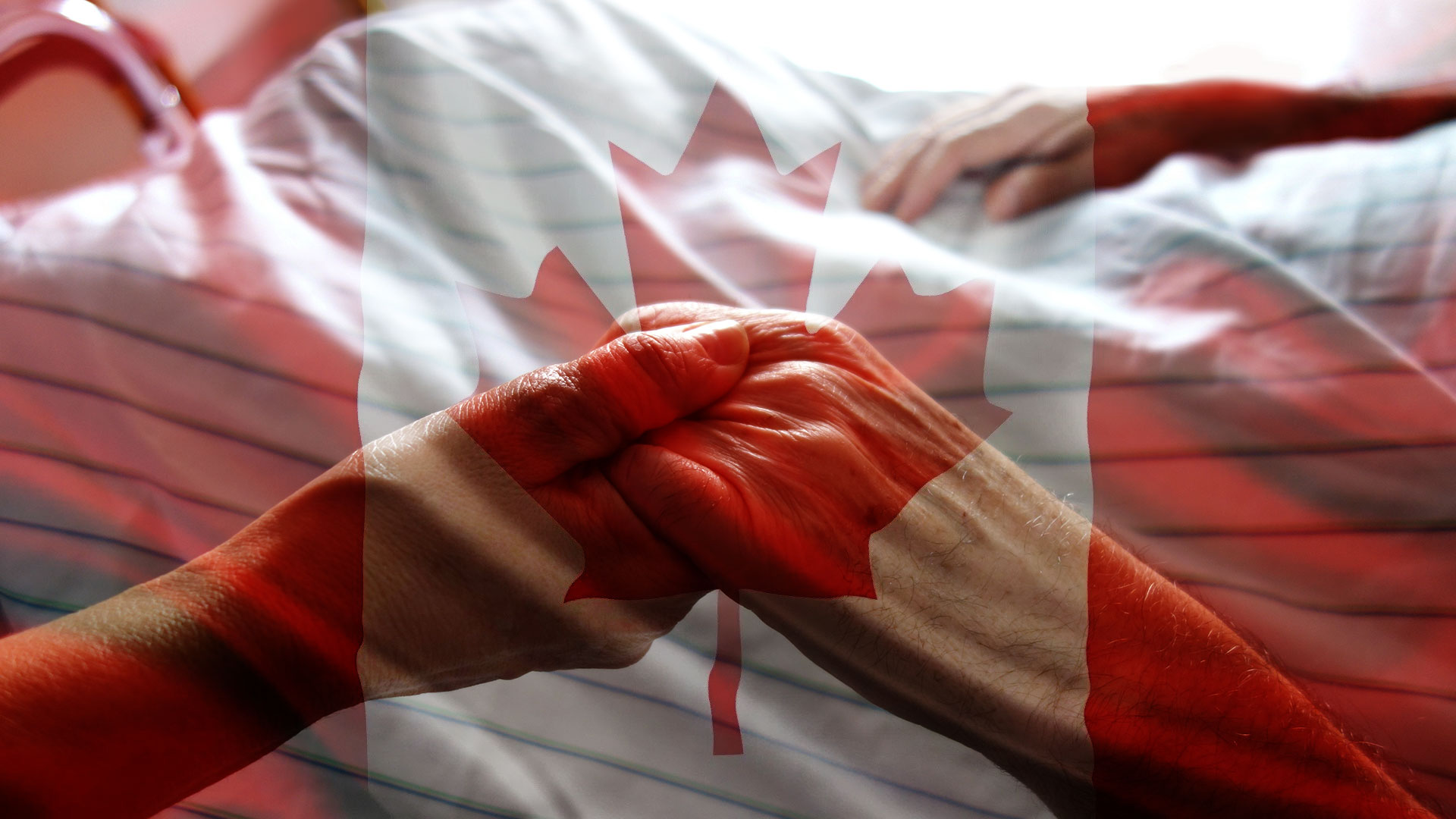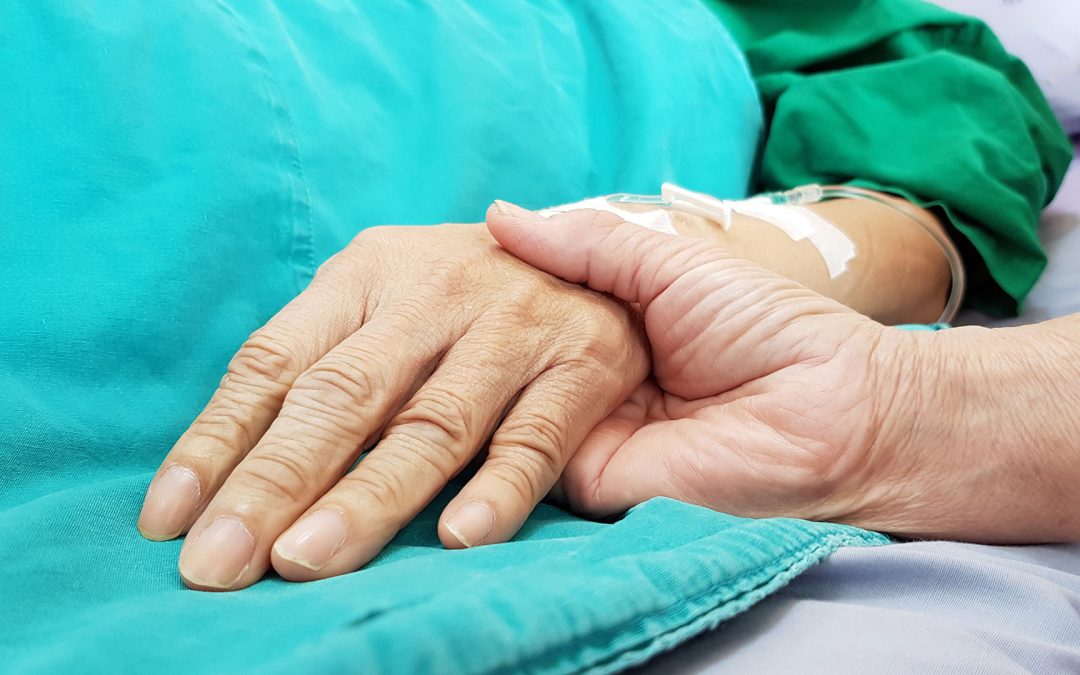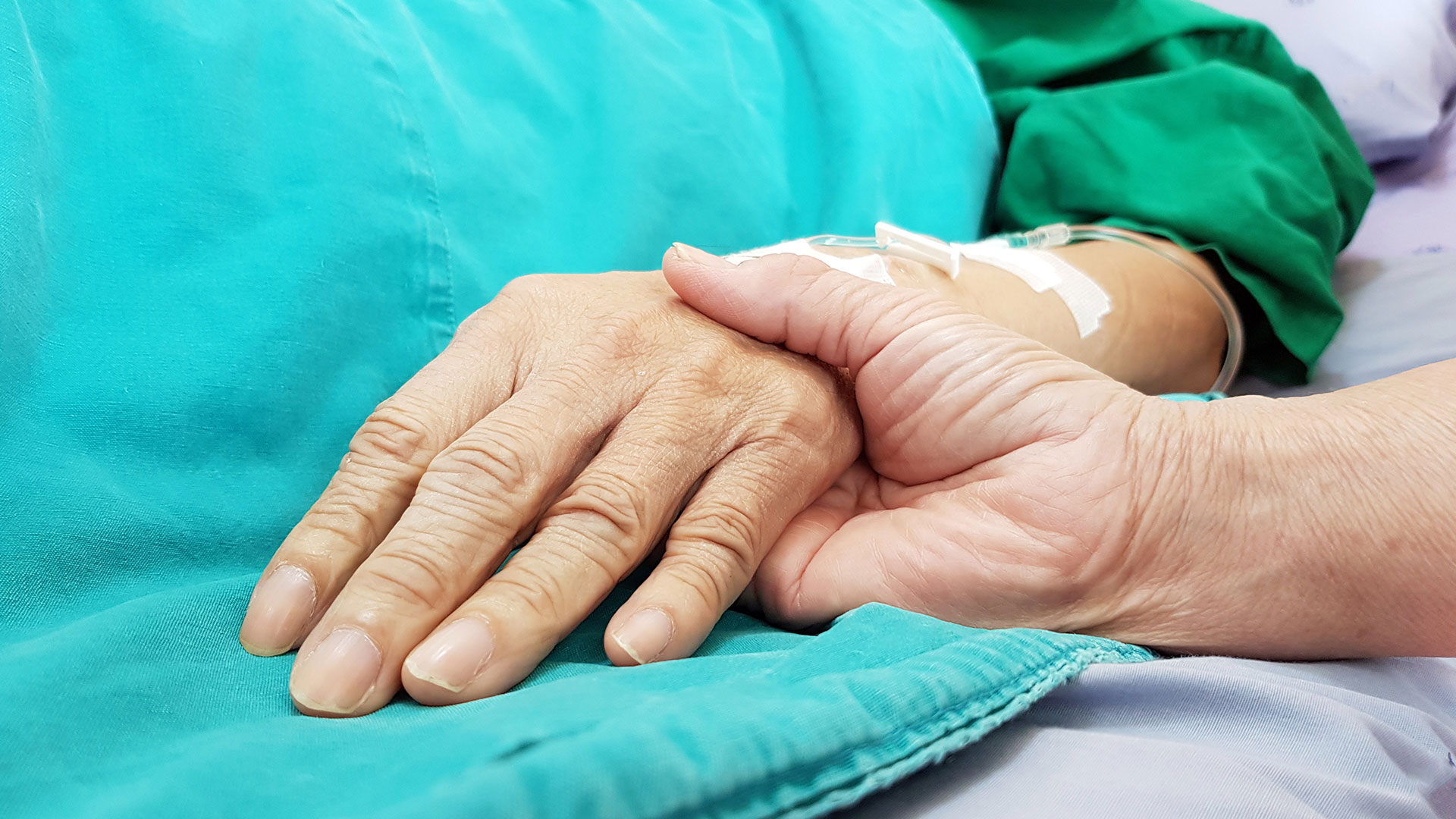
by Claire Anne Brule | June 3, 2022 | Euthanasia and Suicide, News

On May 25th, a new euthanasia bill, referred to in Canadian legislation as “medical aid in dying” (MAiD), was tabled in Quebec. If Bill 38 is adopted, it will add very laxist and controversial measures to the existing law. First of all, the criterium of a “reasonably foreseeable death” would be abolished. In addition, the eligibility requirements would be expanded to include patients with certain neuromotor disabilities. Palliative care centers would no longer have any free choice, they would be obliged to carry out euthanasia upon request.
Nonetheless, Bill 38 is expected to be hastily adopted prior to the end of the parliamentary session on June 10th. This undue haste has been strongly denounced by the opposition and associations.
The original purpose of the bill was to align Quebec’s law with the latest amendment added to the federal law in 2021. Since the latter allows euthanasia and assisted suicide even when death is not reasonably foreseeable, the only medical requirement remaining is to have a serious and incurable illness, and to have unbearable suffering, which is determined by the patient himself.
But in addition, Bill 38 would allow people with severe and incurable diseases to formulate advance requests for an assisted death prior to becoming mentally or physically incapable of doing so. This particular clause is aimed at people with Alzheimer’s, dementia, and some cases of Parkinson’s. Associations such as Live with Dignity (“Vivre Dans La Dignité”) have spoken out against the lack of debate on this issue. In their June 1st press release the association denounces this worrisome first. “Indeed, since the beginning of the debates on the issue of ‘Dying with Dignity’ in Quebec, parliamentary groups have shown the wisdom to allow floor time for opposing viewpoints. »
Two Measures Emerged Like “Rabbits Out of a Hat”
However, as reported only one day after the bill was tabled, the government abruptly deleted some articles from the bill; those which allowed euthanasia for people with neuromotor disabilities (quadriplegia, cerebral palsy, amputation after an accident). These measures had never been previously debated.
Currently hospice palliative care centers have the free choice of whether or not to practice MaiD. Out of 35 hospices, 9 exercise their free choice not to practice euthanasia. The fact that the new bill would remove this “protection of conscience” from the centers is also extremely controversial. The Quebec Alliance for Hospices and Palliative Care (“Alliance Maisons de Soins Palliatifs du Québec) officially requested for this measure to be withdrawn in a press release. When consulted by the ad hoc parliamentary committee on June 1st its President, Marie-Julie Tschiember, expressed hope that the “dice had not already been rolled” and pleaded for the “right to retain their free choice, in accordance with their ethics and the quality of care offered at the end-of-life”.
The new laws have been in effect for only 6 years, yet euthanasia now accounts for 2% of all deaths in Canada. Debates are ongoing as to whether minors and people suffering from mental illness should be eligible for euthanasia. This clearly demonstrates that making exceptions on the prohibition to kill, leaves the path wide open for requesting even more “exceptional” changes. Nowadays, it is the right to live which is being infringed upon, according to associations for people with disabilities. Federal hearings are currently being held on this subject, specifically the hearings held on May 30th.
![[CP] – 20 years of Euthanasia in Belgium: Anything but a Model for France!](https://www.alliancevita.org/wp-content/uploads/et_temp/euthanasieBelgique-1-110264_1080x675.jpg)
by Claire Anne Brule | May 25, 2022 | Press Releases
![[CP] – 20 years of Euthanasia in Belgium: Anything but a Model for France! 3 euthanasiebelgique 1](https://www.alliancevita.org/wp-content/uploads/2022/07/euthanasieBelgique-1.jpg)
PRESS RELEASE – May 25, 2022
20 years of euthanasia in Belgium: anything but a model for France!
Twenty years after euthanasia was decriminalized in Belgium, Alliance VITA objects the idea that its’ laws should serve as a model for France. In private, President Emmanuel Macron holds that, in some cases, he is in favor of adopting the “Belgian’s model”.
Since Belgium first decriminalized euthanasia 20 years ago, the numbers of officially recorded cases have risen 10-fold. This amounts to 2699 procedures performed in 2021, or 1 in every 40 deaths. This is a stark contrast to the premise advanced in 2002 that euthanasia would only be permitted for exceptional situations.
In Belgium, several legal requirements intended to operate as safeguards to avoid abuses have proved to be glaringly ineffective. A study published in 2021 in the Journal of Medicine and Philosophy also denounces the shortcomings of the law and its application.
This article points out that illegal euthanasia persists even though the act has been decriminalized. In Flanders where 75% of euthanasia requests originate, an estimated 30% of all procedures are performed covertly. Belgium’s Euthanasia Commission is allegedly set up to monitor compliance with the law a posteriori, based on doctors’ declarations. Unsurprisingly, the Commission readily admits that it doesn’t have any means of controlling undeclared euthanasia! Some doctors who are members of the Commission even rule on the conformity of their own euthanasia cases!
Based on the reports issued by the Commission, there has been a shift toward accepting euthanasia for a combination of several conditions (polypathologies) and for mental illness with a shocking laxity in assessing incurable illnesses and unbearable suffering. As a result, over the past 10 years, euthanasia has doubled for people who are not at the end-of-life.
- For example, due to a subjective evaluation of suffering, the commission authorized euthanasia for an eye disease! In 2021, the motive for 1 out of 5 cases of euthanasia was an accumulation of pathologies, none of which were fatal.
- Every year euthanasia is practiced on several dozen people for mental pathologies (depression, autism …). Medical practitioners in Belgian have protested that individuals with mental disorders should not be eligible for euthanasia, stating that it undermines their healthcare efforts and has deleterious effects on suicide prevention.
Against the advice of many pediatricians, the law was extended to minors in 2014. Now, members of Belgium’s Federal Control Commission are advocating that euthanasia be extended even further to include those with Alzheimer’s disease.
Alliance VITA’s spokesman Tugdual Derville declares: “At the very least, the scandals in Belgium, have the advantage of showing us how these so-called “exceptions” can lead society step by step, into a culture of exclusion – or even self-exclusion – of the most vulnerable. And towards its’ predictable sequel: distorted, disoriented and confusing palliative care…The prohibition to kill, as the golden rule of trust between caregivers and patients, does not grant any exceptions. This protective ban fosters ingenuity for research in order to innovate and improve care and support for vulnerable individuals. Similarly, nobody should be labelled as being unworthy of suicide prevention. Seeing how Belgium’s laws have drifted so far after being ensnared by “borderline” cases, we must acknowledge that the most vulnerable deserve more consideration. France must advocate for new ways of accompanying the elderly and making palliative care accessible everywhere for everyone. According to the stipulations voted by law in 2005: neither therapeutic obstinacy, nor euthanasia, but relief of suffering, accompaniment and palliative care. »

by Claire Anne Brule | May 20, 2022 | End of life, News

On May 16, 2022, Emmanuel Macron appointed Elisabeth Borne to serve as Prime Minister for his second five-year term as President of France. This appointment has pushed Alliance VITA to maintain its vigilance on the subject of the end-of-life.
Before his re-election, Emmanuel Macron declared that a “citizens’ convention” would be held to settle the debate on the end-of-life. Alliance VITA is worried and reluctant about this announcement and has exposed its’ 7 reluctances.
There is a lot to be done in order to better support the end of life in France. The priorities include reforming the hospitals and making palliative care more widely accessible. Just this week, the president of the Federation for French Hospitals voiced his alarm at the countrywide closing of emergency services, and the overwhelming pressure being put on specialty care units. He insists that “the time has come for speedy, ambitious, strong and sustainable measures.”
As the date for the legislative elections draws closer, Alliance VITA reasserts the need to maintain the ban on euthanasia and “assisted suicide” for all situations across the board.
In reality, the so-called “borderline” cases refer to patients who are extremely vulnerable but whose outcome is not without hope. Better health management and more intensive care is required in these situations.
As a philosopher and professor of medical ethics, Pr Eric Fiat points out that Kant warned us that “evil comes from the exception“, such as lying “every time, just for one last time”. Fiat declared that “to allow exceptions to fundamental bans is to run the risk of overlooking the extent of the wrongdoing at stake.”
In addition, the notion of dignity is confusing. Based on how it is interpreted, it can either be used to promote or oppose euthanasia. Christians attest that man’s dignity is derived from being formed in the image and likeness of God. But in “The Foundations of the Metaphysics of Morals”, Emmanuel Kant secularized this ontological conception. Man’s dignity comes from the presence, in us, of the same moral law, a source of wonder. He writes: “Things have a price, but Man has dignity, and dignity is indivisible into degrees or parts.”
So, can we say that every man is worthy because he is man, and at the same time that a person can lose all dignity? This ontological conception of dignity is different from a “postural” sense of dignity, or a question of “standing”, synonymous with “decency” or “not letting go”. According to this definition, there can be different “degrees” of dignity. Even if dignity cannot be lost, ontologically speaking, the feeling of dignity can be lost. The notion of recognition implies that if my dignity is not acknowledged by others, it does not really exist; it is devalued or diminished. There are in fact, behavior and conditions which are unworthy of human dignity. Caregivers are constantly striving to respect the dying by providing the most dignified conditions possible. Nonetheless, there are fears that if the end-of-life law is reformed, the “postural” concept of dignity will take precedence over the ontological one.
The Danger of Stigmatizing Certain Diseases – such as Charcot’s Disease
Qualifying a disease as being “eligible for euthanasia” is an additional affront which adds to the pain of being diagnosed with an incurable disease. In his recent book, L’impasse de l’euthanasie” (The Euthanasia Impasse), Henri de Soos points out that when a country changes its legislation, it doesn’t happen in a vacuum. The regulating character of a law influences mentalities, and subsequently has an impact on citizens’ behaviors.” In their individualistic quest to obtain a new right, euthanasia supporters refuse to consider this aspect. They claim they only want relief for exceptional cases of unbearable suffering. But they especially do not want to recognize that it affects society as a whole. »
Thus, when the death penalty was abolished in 1981, the French Parliament declared to the entire nation that the right to life is “the foremost of human rights”, and that “no one can dispose of the life of another”. In 2008, the Socialist Senator, Robert Badinter, emphatically reiterated this statement, and made a coherent stand against legalizing euthanasia, and against passing laws for any “exceptions”.
In all the countries which have legalized euthanasia, the official number of euthanasia or assisted suicides increases year after year. Observing the numerous abuses to these euthanasia laws proves that what was supposed to remain an exceptional act gradually tends to become trivial.
Henri de Soos reminds us that euthanasia is an exception to the universal law on the prohibition against killing. He states that “so far only a dozen countries have voted democratically to implement laws that are really applicable, and often this is only partial in federal countries. This represents only about 5 % of the 195 States recognized by the United Nations, thus indicating an even smaller percentage of the world’s population. As a small minority, they are more an ‘exception to the rule’ than a precursor to a new universal rule.”
As Alliance VITA insisted last October during the hearings to the End of Life group for the National Ethics Advisory Committee “the ban on killing is the red line that must not be crossed in order to live in society”. There are conflicting voices in the Committee, but its’ long-awaited conclusions could be released before summer.
Beyond the medical aspect, this is a cultural issue which concerns everyone. As the basis of trust between caregivers and patients, the prohibition of killing also kindles the necessary inventiveness to foster research and improve the care and assistance for vulnerable individuals.

by Claire Anne Brule | May 20, 2022 | News, Surrogacy

The human tragedy associated with the war in Ukraine hasn’t shown any signs of relenting. It includes not only the massive displacement of civilians, but also some “collateral damage” to the country’s lucrative surrogacy business. According to the UN High Commissioner for Refugees, out of a population of 45 million, 7 million civilians are estimated to have left their homes, and another 6 million to have left the country. Among all these tragic displacements are women who have signed contracts with surrogacy agencies. Some have recently arrived in France in order to “finish off their surrogacy contract “. Despite the fact that surrogacy is prohibited in France, French sponsors bypass the law once the surrogate mother arrives by having her give birth anonymously, with an X or a blank left in the place for recording the name of their biological mother. The claim for the adoption of the child has already been prearranged by the man providing his gametes for conception and recognized as the biological father. His spouse will later file for full adoption of the child, in order to be declared as the child’s “mother”.
Globalizing the Least Ethical Scenario
To deal with these painful situations which affect both the surrogate mother and the baby, some are arguing in favor of legalization, or “supervision”. They maintain that practices which are legal in one country always end up being exported elsewhere, just as for illegal products. Some jurists are thus arguing that in this current era of globalization, it is futile to defend bans against illegal products and services. A rather strange argument, for many reasons. Does this surprising assertion indicate that the promise of “happy globalization” for this millennium is starting to crumble? Are many starting to feel somewhat disillusioned by the ecological and social outlays? Even worse is the mere use of the term “globalizing surrogacy” because it means acknowledging the business nature of this practice, in an emotionless manner. Is it ethical for the business vocabulary used for products to be attributed to human beings: globalization, division of labor, cross-border trade? Beyond the widespread media attention given to these cases, there is a deeper and more sordid reality. According to one of its promoters, “surrogacy must necessarily be a business, otherwise it wouldn’t exist“. But is all “business” really inevitable?
Supervision: Disguising Predictable Developments with Pragmatism
Calling for practices to be supervised is a well-oiled mechanism. An exception is used to justify the rule, and in the end the rule becomes an exception. A recent op-ed asserted that prohibitions lead to underground channels, and even trafficking. This line of reasoning is obviously flawed and cannot be applied to all kinds of activities nor to the economy. As seen in many ad hoc arguments, factual observations are alluring. Unfortunately, prohibiting human trafficking, or child labor, cannot not prevent its existence. But it this a reason to give up the idea of a ban ? Concerning surrogacy cases, some contend that the surrogate mother has given her legal consent. Even so, it is important to understand the underlying circumstances for giving that consent.
Surrogacy Produced by a State of Necessity
The lawyers defending the few Ukrainian women giving birth in France invoked “the state of necessity” to justify circumventing French law. Admittedly, war does cause unforeseen and painful upheavals. It does lead to real dangers and imminent threats where people require protection, especially civilians. But this state of necessity resulting from the war should not conceal the original cause for resorting to surrogacy , namely the state of necessity of poor women who resort to this practice in order to survive. In Ukraine, this has already been amply demonstrated. In some cases, a surrogate mother may receive the equivalent of 5 years of salary. Thus, the genuine “state of necessity” to be considered is the social injustice that pushes a woman to sign a contract to lease her body.
An Insecure Red Line?
The French Minister for Justice, Eric Moretti had asserted that “surrogacy is a red line that we absolutely do not wish to cross”. However, some decisions are nibbling away at this red line to the point where there may no longer be any need to cross it. These include allowing surrogacy to take place in a country where it is unlawful, accepting that the practice is advertised, and not combatting it on an international front. War is indeed an undertaking that causes irreplaceable damages. So is surrogacy. It is more than urgent to create an international ban on surrogacy and human trafficking.
For further information : [Video Replay] – Webinar “The reality of surrogacy” – Alliance VITA

by Claire Anne Brule | May 20, 2022 | Abortion, News

Just after the Politico website published the Supreme Court’s preliminary draft opinion on the right to abortion, the prestigious medical journal The Lancet published an angry editorial retort on May 14, 2022. Entitled “Why Roe vs Wade must be defended“, it was also widely reported in the French press on the very day the Lancet article appeared.
It is stated, in particular, that: “If the Supreme Court confirms its draft decision” (transferring abortion jurisdiction back to the states),’” then women will die. (…), the Justices and their supporters will have women’s blood on their hands.”
To support this allegation, The Lancet refers to the WHO’s publication dated March 8, 2022, where unintentional pregnancies and the subsequent abortions were reported to be unsafe. The WHO recommended that abortion deadlines should be abolished. It was claimed that legal restrictions were not only ineffective at reducing the number of abortions, but that these restrictions correlated with an increased rate of unsafe abortions and maternal mortality.
On April 8, 2022, Alliance VITA analyzed the dubious manner in which the data was calculated to make such claims, and found significant biases in the estimates and extrapolations. The WHO had originally based its’ assertions on a 2020 Lancet article which evaluated the periods from 1990-95 and 2015-19, and claimed that countries with liberal abortion policies saw abortion rates fall by 43%. Conversely, they reported a 12% abortion rate increase in countries with strict abortion laws. Oddly, China and India, which account for nearly 3 billion of the 7.9 billion of the earth’s inhabitants, and where abortion is legal, were curiously excluded from the calculations. If the data from these two countries are included, the decrease in abortion rates is only 8% in countries with liberal policies. Moreover, for the period 2015-19, the overall abortion rate for countries with liberal policies was shown to be 11% higher than in countries with strict laws. Therefore, when the comprehensive set of data is used, the WHO’s conclusions are refuted: there is no correlation between legalizing abortion and decreasing the number of abortions.
Moreover, according to the latest Lancet editorial, abortion is the end result for three-fifths of the 120 million unintentional pregnancies, with 45% labelled as being performed under unsafe conditions. “This leaves 33 million women undergoing unsafe abortions, their lives put at risk because laws restrict access to safe abortion services.” Nonetheless, in November 2017, an article published by the same journal stated that: “no clear correlation was observed between the incidence of unsafe abortion and maternal mortality rates.”
Excess Mortality Data Misinterpreted for Black American Women
The Lancet editorial also claims that “in the United States, the maternal mortality rate for Black women, who account for a large number of unsafe abortions, is almost 3 times higher than for non-Hispanic White women.”
According to national statistics by ethnicity, from 2018 – 2020, the maternal mortality rate for Black women was 2.5 – 2.9 times the rate for non-Hispanic White women. In May 2021, an in-depth analysis of the causes of maternal mortality was published in “Maternal Mortality in the United States” where abortion was not found to be a main factor. Indeed, even when abortion was broadly interpreted as any pregnancy with an abortive outcome (miscarriage, ectopic pregnancy, surgical or medically induced abortion… 1) the total number of mothers who died during childbirth in 2018 was 658, including 205 Black women. This meant that a 7.6% mortality rate was attributed to abortions, far behind hypertension, circulatory system abnormalities, embolisms and other causes. There was no evidence found that Black women had increased maternal mortality due to elective abortions. On the contrary, the authors emphasized that maternal mortality might be due social factors such as “income, social status, education, access to the health care, housing, physical environment, social services, and cultural differences.”
Apart from the current debate regarding the upcoming Supreme Court decision, it is paradoxical a scientific journal such as The Lancet, should put forward unjustifiable and unscientific conclusions. Their time would be better spent evaluating conditions of maternal mortality among Black women and how to improve overall health care and social policies for the Black community.
1 https://icd.who.int/browse10/2019/en#/O00-O08



![[CP] – 20 years of Euthanasia in Belgium: Anything but a Model for France!](https://www.alliancevita.org/wp-content/uploads/et_temp/euthanasieBelgique-1-110264_1080x675.jpg)
![[CP] – 20 years of Euthanasia in Belgium: Anything but a Model for France! 3 euthanasiebelgique 1](https://www.alliancevita.org/wp-content/uploads/2022/07/euthanasieBelgique-1.jpg)





